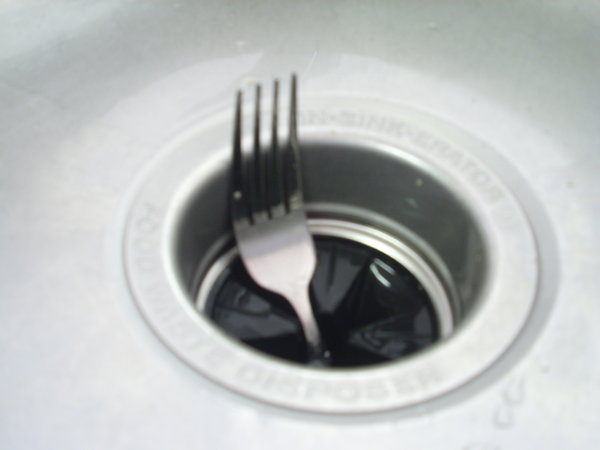Garbage Disposals
Take Care - What's in There?

We get so many calls regarding broken garbage disposals, it's not even funny. Here is some information which we hope will help you prolong the life of your disposal - and save you from getting a bill when you break yours! (Yes, if you jam it, the owner isn't going to pay for it.)
Garbage disposals are intended for dealing with scraps of food that go down the sink from your plate as you are rinsing them… they’re not electric trash cans. Contrary to what you may have been told, most of your food still belongs in the trash (or on the compost heap, if you're lucky enough to have one).
It’s not just about the garbage disposal machinery itself. The water pipes were designed to carry water. They cannot handle large amounts of sticky food. They easily become clogged and when that happens, they can back up, which causes flooding. Again, if this happens, the invoice may be coming to you instead of the owner.
How to Reset a Garbage Disposal
CORRECT USE OF THE DISPOSAL
Always turn on the water first. Then introduce scraps slowly. Do not fill up the sink with food and then poke it down with a spoon and turn on the unit… this causes a flood of food to go into the pipes at once, which will stick to the grease you poured down there earlier – which also doesn’t belong in the sink.
FOOD ITEMS THAT DON’T BELONG IN THE DISPOSAL
You might be surprised to find out…
• Fats and grease: Fats and grease will adhere to the pipes over time, creating backups and clogged pipes. We are seeing too much of this. Grease does not belong in the sink. Wipe out the pan with a paper towel and put it in the trash can.
• Paper, plastic, glass: Avoid dropping down paper such as coffee filters, or bits of packaging as you are taking items out of their wrappers.
• Rice and pasta: Starchy foods are notorious for clogging up both the blades and the pipes.
• Egg shells: The pieces of shell can linger in the pipes and cause a blockage.
• Shells from shellfish or meat bones: Bones from items like chicken, or shells from shellfish can break off and get caught in the blades.
• Vegetable peelings: If you are peeling a bunch of potatoes or carrots, place them in your garbage instead of sending them down the disposal. In particular, watch out for fibrous material like sweet corn husks and celery, which will get wrapped around the blades.
• Fruit pits: Cherry pits, peach pits, nectarine pits – any type of fruit that has a hard, middle seed.Also do not rinse fish tank gravel over the sink!
FIXING THE DISPOSAL
Most people are capable of removing the offending items themselves, provided they are not jammed in there too tightly. Always make sure to disconnect the power or turn off the breaker before putting your hand into the hole. Once the object has been removed, there is a small "reset" button underneath the garbage disposal unit (or sometimes on the side). Once the object is removed and the unit is reset, the disposal will usually start up again. Watch this video for more information.
MAINTENANCE OF THE DISPOSAL
Use a cup of bleach regularly to keep the sink clean and grease free. Ice cubes are good for cleaning and sharpening the blades.
If in doubt, keep it out! The trashcan is probably two steps away.







